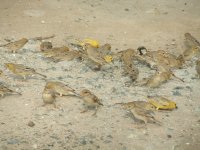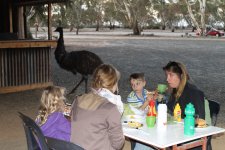earlytorise
Well-known member
I haven't done many birding trips.
When I next do one, I wonder whether I will tick any wild bird that has been more or less tamed by the hotel or location providing it with food/water.
My focus is on watching birds and not on getting the absolute best photo. I would understand if a photographer likes tame birds.
For example, in China the way most people twitch all those rare babblers, laughingthrushes and magpies is to sit in a hide that overlooks a water bath. The birds in question would visit the bath every day.
I am inclined to think that proper ticks on one's list, if you're a serious twitcher, ought to be a challenge.
But then, I am not completely convinced of it. I wouldn't mind visiting an artificial garden to see a bird. But the garden would count as providing it with food.
Your thoughts are welcome!
When I next do one, I wonder whether I will tick any wild bird that has been more or less tamed by the hotel or location providing it with food/water.
My focus is on watching birds and not on getting the absolute best photo. I would understand if a photographer likes tame birds.
For example, in China the way most people twitch all those rare babblers, laughingthrushes and magpies is to sit in a hide that overlooks a water bath. The birds in question would visit the bath every day.
I am inclined to think that proper ticks on one's list, if you're a serious twitcher, ought to be a challenge.
But then, I am not completely convinced of it. I wouldn't mind visiting an artificial garden to see a bird. But the garden would count as providing it with food.
Your thoughts are welcome!












